The previous article described some of the concepts and implementations of the dual port. This article will further test the reliability and performance verification of the dual port feature of the NVMe SSD. (The test uses two-way AMD servers, each with two Intel(R) Xeon(R) CPUs E5-2650 v4 @ 2.20GHz and 64GB of RAM, and one PLX 9797 PCIe Switch, each with 20 ports. Can mount 20 PBlaze5 at the same time.)
Dual port reliability testLink redundancy:
Dual-port NVMe SSDs provide redundancy in the event of a link disconnection or port failure. As shown below:

Figure 1: Link redundancy mode
The server can see two NVMe devices and can read and write two NVMe devices.
If a link to the NVMe device is interrupted, another link can remain connected and survive, and the server can normally access the NVMe device.
Active mode:
Dual-port NVMe devices connect to different server A and server B as follows:
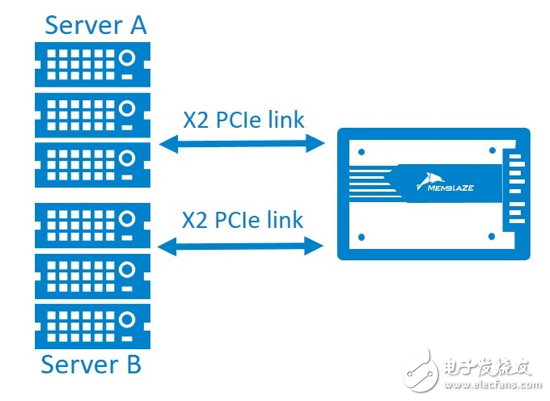
Figure 2: Live mode
Server A and server B perform normal shutdown, abnormal shutdown, nvme reset, or pcie reset at the same time. Both servers can operate normally and are not affected by each other. Server A and server B do different operations from each other, and they are not affected by the NVMe device. The two servers can also do not interfere with each other.
Server A and server B are normally shut down, abnormally shut down, nvme reset, or pcie reset at intervals. Both servers are powered off and are powered on. They are not affected by each other. They can also load NVMe devices normally after startup.
Server A runs IO workload, server B triggers normal or abnormal shutdown, server A will not be affected, including data integrity and I / O throughput and delays and so on; vice versa;
NVMe SSD performance in dual port mode:
Take the active-active configuration mode as an example. In terms of performance, it mainly shows that two servers simultaneously perform sequential write, sequential read, random write, random read, and one server read, and another server write and other modes, and do it with single-port mode. Compared.
The main features are as follows:
Two ports simultaneously IO, check and compare bandwidth:
The performance of the two ports is basically the same; the sum of the performance of the two ports is consistent with the performance of the single-port mode.
Two ports perform different IO modes at the same time:
For example, one server performs sequential reads, another server writes sequentially, and its performance is significantly better than that of the same mode.
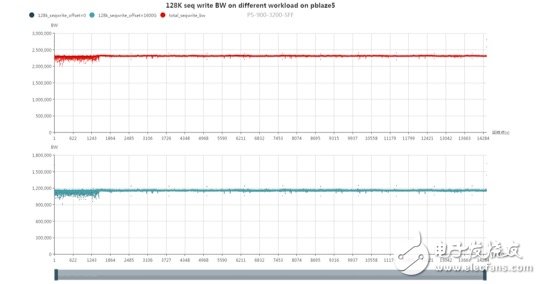
Figure 3: 128K seq write BW on different workload on pblaze5 DualPort SSD
The figure above shows the performance of server A and server B performing 128K sequential writes. In the above figure, the red performance curve is the total bandwidth of the SSD, reaching 2300MB/s. The following figure shows the bandwidth of the two servers. It can be seen that the bandwidth is basically the same, reaching 1150MB/s.

Figure 4: 128K seq read BW on different workload on pblaze5 DualPort SSD
The above figure shows the performance of sequential reads of 128K for server A and server B respectively. The red performance curve in the above figure is the total bandwidth of the SSD, up to 3135MB/s; the following figure shows the bandwidth of the two servers. It can be seen that the bandwidth is basically the same, reaching about 1566MB/s.
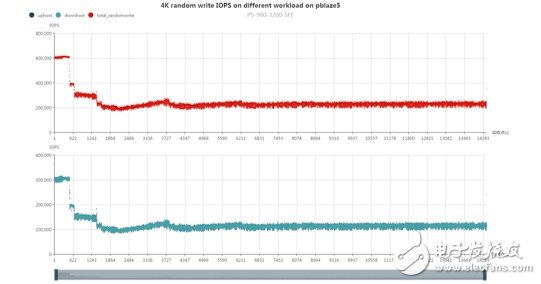
Figure 5: 4K random write IOPS on different workload on pblaze5 DualPort SSD
The figure above shows the performance when server A and server B perform 4K random writes respectively. In the above figure, the red performance curve is the total IOPS of the SSD, reaching 230k; the following figure shows the IOPS of the two servers. It can be seen that they are basically the same and all reach about 115k.
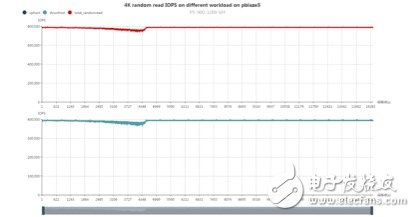
Figure 6: 4K random read IOPS on different workload on pblaze5 DualPort SSD
The above figure shows the performance of a random read of 4K for server A and server B respectively. In the above figure, the red performance curve is the total IOPS of the SSD, reaching 782k; the following figure shows the IOPS of the two servers. It can be seen that they are basically the same and all reach about 391k.
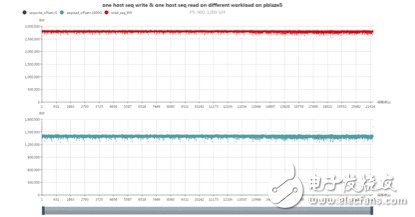
Figure 7: One host seq write & one host seq read on different workload on pblaze5 DualPort SSD
The above figure shows the performance of server A performing sequential writes while server B performs sequential reads. The red performance curve in the above figure is the total bandwidth of the SSD, reaching 2790MB/s; the figure below shows the bandwidth of the two servers, the write bandwidth is around 1390MB/s, and the read bandwidth is up to 1400MB/s.
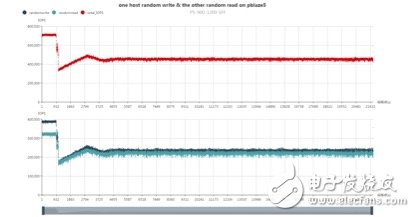
Figure 8 one host random write & the other random read on pblaze5 DualPort SSD
The figure above shows the performance of random writes by server A while server B performs random reads. The red performance curve in the above figure is the total IOPS of the SSD, which is about 450k. The figure below shows the IOPS of the two servers, which are about 230k and 220k.
in conclusion:This article describes the application of dual-ports in enterprise-class storage and shows the features and performance of dual-port SSDs one by one, which illustrates the practical value of dual-port NVMe SSDs. With the perfection and maturity of arrays, systems, and servers, dual-port NVMe SSDs will have a greater advantage in enterprise-class storage systems.
The CAT6A 10Gig UTP modular jacks provide transmission performance beyond 500MHz and Alien Crosstalk requirements exceeding the industry standards set by ANSI/TIA-568-C.2 for supporting the operation of 10Gig Ethernet applications (10GBASE-T). It is designed with a shielded termination cap which minimizes additional AXT from neighboring connectors. It also features twisted pair separation posts which minimize the untwisting of pairs to allow for efficient installation and long-term peak performance. The modular jacks are also backward compatible supporting current CAT6, CAT5e, and voice network applications.
CAT6A Keystone Jack,Keystone Jack CAT6A,Cat6a Jack,Keystone 6a
NINGBO UONICORE ELECTRONICS CO., LTD , https://www.uniconmelectronics.com
![<?echo $_SERVER['SERVER_NAME'];?>](/template/twentyseventeen/skin/images/header.jpg)